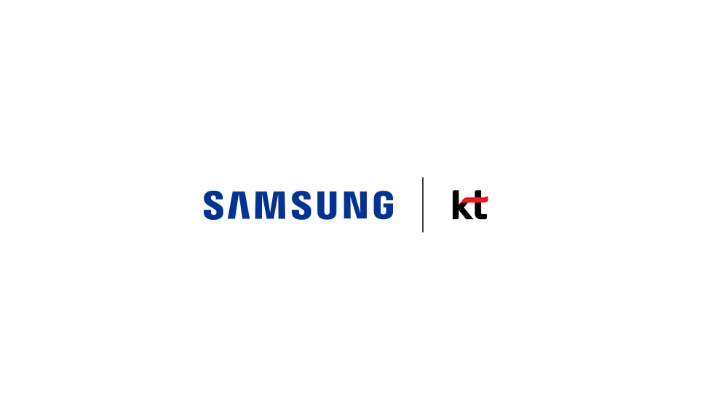Samsung Electronics and KT Corporation Join Forces for 6G Innovation
In a landmark move for the telecommunications industry, Samsung Electronics has entered into a strategic partnership with KT Corporation, a leading telecom giant in South Korea. This collaboration, marked by a memorandum of understanding (MOU) signed earlier this month, aims to pioneer research and development in next-generation communication technologies, specifically targeting the enhancement of 6G signal quality. The partnership will focus on advancing multi-antenna technologies and exploring the integration of artificial intelligence (AI) within wireless communication networks.
The Evolution Towards 6G: A Technological Leap
In the backdrop of global discussions surrounding future communication standards, Samsung and KT are setting their sights on eXtreme multiple-input multiple-output (X-MIMO) technology. This innovative approach involves ultra-high-density antennas that promise to bolster 6G coverage while significantly increasing data transmission speeds. The goal is to overcome current limitations and push the boundaries of network performance.
The International Telecommunication Union (ITU) plays a pivotal role in these discussions, hosting the World Radiocommunication Conference (WRC) in 2023. At this conference, the 7 GHz band, ranging from 7.125 to 8.4 GHz, was identified as a potential candidate for 6G deployment. The global mobile communications sector views this frequency as a promising option due to its advantageous characteristics and spectrum availability. However, utilizing the 7 GHz band presents unique challenges. Operating at a higher frequency than the 3.5 GHz C-band used in 5G, the 7 GHz band is more susceptible to signal path loss, making it crucial to find ways to maintain coverage akin to 5G levels.
Overcoming Challenges with Advanced Technologies
To tackle these challenges, Samsung and KT are delving into beamforming technology, which allows for the transmission of focused signals in specific directions. This precision enhances signal strength and reliability. Additionally, they are exploring multi-spatial transmission technology, enabling the delivery of data to multiple users simultaneously through several beams. The deployment of X-MIMO systems within the 7 GHz band will entail the use of more antennas compared to current 5G systems, necessitating robust system architectures capable of managing ultra-high-density antennas efficiently.
Beyond hardware advancements, the collaboration emphasizes the convergence of telecommunications and AI. This integration aims to enrich the user experience, particularly in edge coverage areas—regions at the periphery of network coverage. AI can predict and preemptively address potential disruptions in communication, such as video streaming interruptions, thereby ensuring a seamless user experience.
Strategic Vision from Key Industry Leaders
Angelo Jeongho Park, Executive Vice President and Head of the Advanced Communications Research Center (ACRC) at Samsung Research, expressed a strong commitment to developing groundbreaking 6G technologies. "Our focus is on enhancing both the operational efficiency of the 7GHz band and the overall user experience," Park stated. "Collaborating with KT provides a solid foundation for advancing next-generation communications through strategic, cost-effective investments."
Similarly, Jong-Sik Lee, Executive Vice President and Head of the Future Network Laboratory at KT, highlighted the collaboration’s potential to secure cutting-edge network technologies that enhance user experience quality. "Through our joint research with Samsung Electronics, we aim to strengthen core 6G technologies and lead future mobile communication innovations," Lee noted.
Technical Insights and Industry Context
To provide a clearer understanding, let’s break down some technical jargon:
- Multiple-input multiple-output (MIMO): This technology enhances communication performance by using multiple antennas at both the transmitter and receiver ends. The use of multiple antennas allows for simultaneous transmission of multiple data streams, improving network capacity and reliability.
- World Radiocommunication Conference (WRC): Organized by the ITU, this intergovernmental event coordinates the global usage of radio frequencies. It ensures that the radio spectrum is used efficiently and harmoniously across the world.
- International Telecommunication Union (ITU): As a specialized agency of the United Nations, the ITU oversees information and communication technologies globally. It comprises 193 member states, along with over 1,000 companies, universities, research institutes, and international and regional organizations.
Broader Implications and Future Prospects
The collaboration between Samsung and KT is not just a step forward in technology but also a strategic maneuver in the highly competitive telecommunications landscape. As countries and corporations vie for leadership in 6G technology, partnerships like these are essential to drive innovation and maintain a competitive edge.
Moreover, this initiative reflects a broader trend in the industry towards integrating AI into telecommunications. As networks become more complex and data demands surge, AI provides the tools to manage these complexities efficiently. By predicting network traffic patterns and optimizing resource allocation, AI can significantly enhance network reliability and user satisfaction.
Conclusion
In conclusion, the partnership between Samsung Electronics and KT Corporation marks a significant milestone in the journey towards 6G technology. By focusing on advanced antenna technologies and AI integration, the collaboration aims to overcome current limitations and set new standards for future communication networks. As the world eagerly anticipates the next leap in telecommunications, developments like these pave the way for a connected future that is both faster and more reliable.
For more information, readers are encouraged to visit the original article on Samsung’s global news site. As this collaboration progresses, it is expected to yield innovations that will shape the future of mobile communications and redefine how we connect with the world.
For more Information, Refer to this article.




















![Samsung’s Innovation Sparks Progress in Science and Industry: Quantum Dots How Samsung’s Engineering Feat Became a Catalyst for Scientific and Industry Advancement [Interview on Real Quantum Dots Part 2.]](https://www.hawkdive.com/media/samsung-tvs-and-displays-samsung-quantum-dots-technology-qled-tvs-quantum-dots-experts-interview-par-218x150.jpeg)













